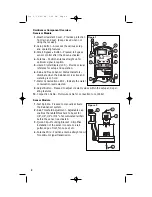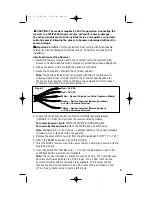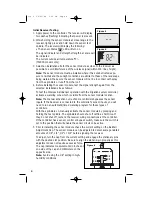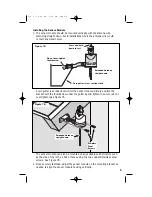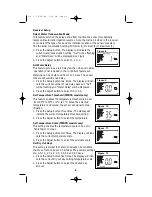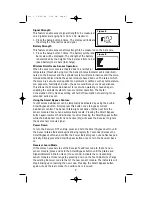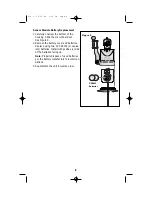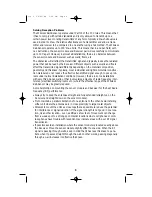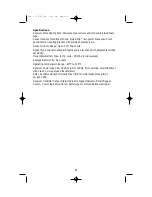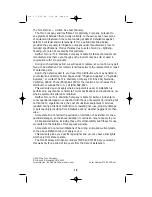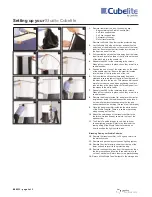
Initial Receiver Testing
1. Apply power to the controller. The receiver will display
two dashes (flashing) indicating that power is present.
2. While holding the sensor module at close range to the
receiver, lightly press and hold down the sensor test
spindle. The receiver will display the following:
• The Sensor Status
LED will turn on.
The signal indicator and strength strength bar scale will
be indicated
The current outside air temperature (°F) –
(TWRFS models only).
3. Select an installation site for the sensor module as close to the receiver as
possible to avoid interference of the wireless signal (within 500' line of sight).
Note:
The sensor module must be installed where it has unobstructed expo-
sure to rainfall and the sunlight conditions are similar to those of the landscape
being watered. Make sure the sensor module will not be in contact with spray
from the sprinklers or runoff from the roof.
4. Before installing the sensor module, test the signal strength again from the
selected installation site as follows:
To test the Wireless RainSensor operation with the irrigation system controller,
activate a watering zone which is visible from the sensor module location.
Note:
The manual activation cycle of some controllers bypasses the sensor
inputs. If the Receiver is connected to the controller’s sensor inputs, you will
need to run an automatic/timed watering program for these types of
controllers.
With the sprinklers on, manually activate the sensor module by pressing and
holding the test spindle. The sprinklers should shut off within a short time. If
they do not shut off, recheck the receiver wiring connections at the controller.
If the controller has a sensor control or bypass switch, make sure the switch is
set to the position that will enable the sensor circuit to be active
5. Prior to installing the sensor module check the current setting on the Rainfall
Adjustment Cap. The sensor module can be adjusted to detect average rainfall
amounts of 1/8", 1/4", 1/2"or 3/4" before signaling the receiver.
To adjust, turn the cap from the current setting and engage the stationary pins
with the desired slot position. Be sure to align the slot and pin properly as this
adjustment does not require excessive force.
The cap indicates measurements in inches on
one side of the cap and millimeters on the
opposite side.
Note:
Avoid using the 1/8" setting in high-
humidity conditions.
4
Figure 4
Figure 5
3/4
1/4
1/2
1/8
Figure 6
Doc 5 12/21/04 6:36 PM Page 4


